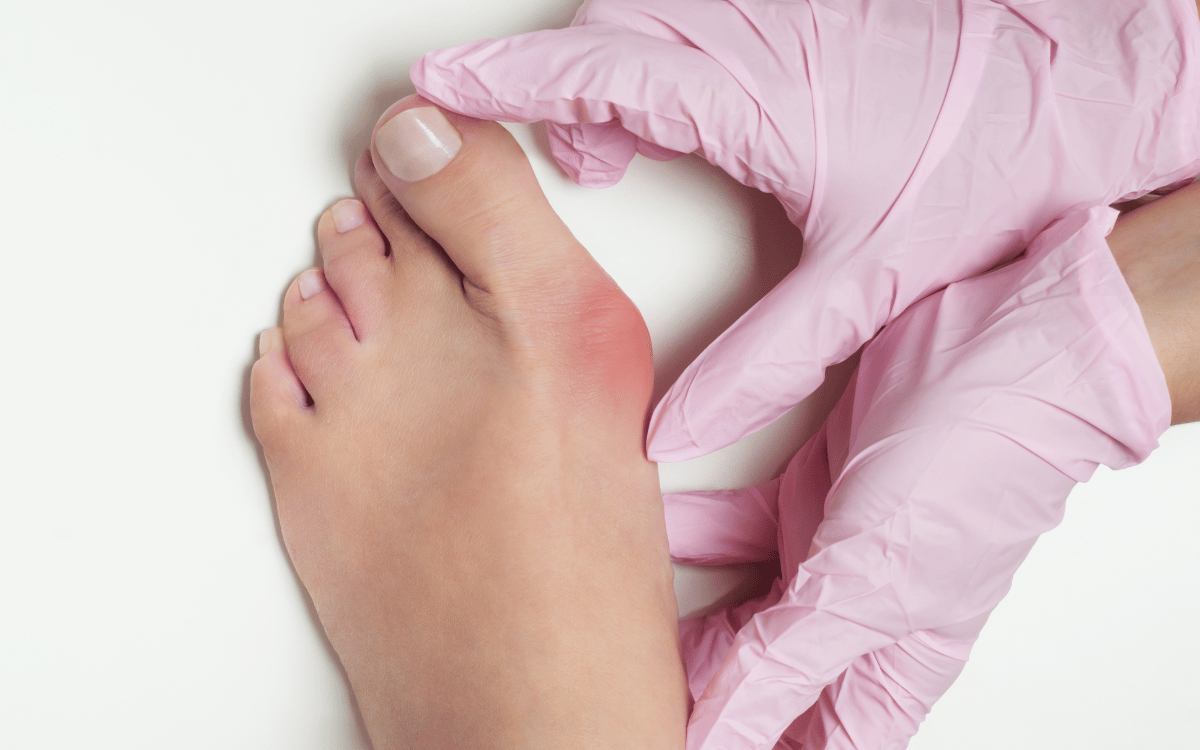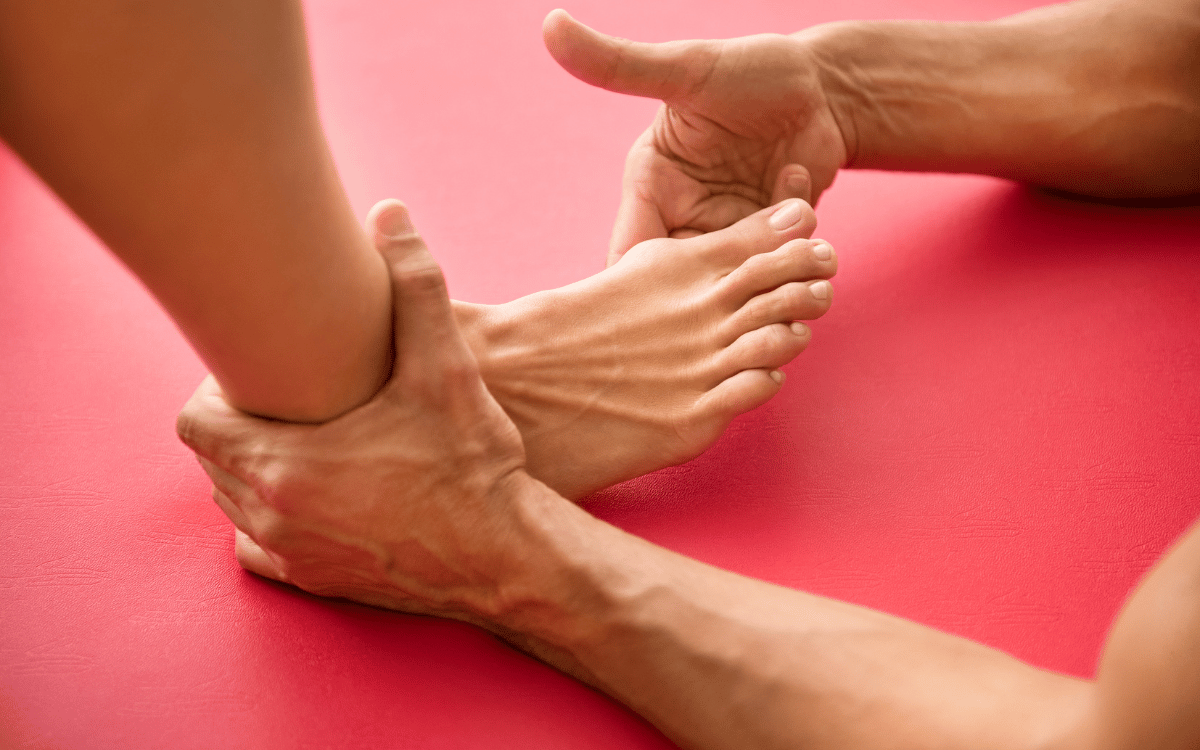Bunions affect 1in 3 people and are incredibly common. While there are many treatments available for bunions, it is best to prevent them from developing in the first place. Here are some tips on how to do that:
Check your feet regularly and be aware of any changes, even if they seem small.
Choose appropriate shoes. If you have a tendency to get bunions, avoid wearing shoes that are tight. The culprits when it comes to shoes tend to be runners believe it or not. An interesting study out of the uk showed that runners that were too tight put more pressure and accelerated a bone growth (the bone that sticks out with a bunion) faster than heels.
Do regular strength training exercises to strengthen the muscles in your feet and ankles. Work on strengthening all parts of your foot, including those around the toes.
These 2 are particularly good at both helping and preventing a bunion.
The Big Toe Exercise:
This exercise targets the big toe joint and helps to improve its range of motion.
- Cross your left ankle over your right knee (opposite for your right foot).
- Use your left hand to stabilise your foot.
- With a flat palm, slide your right hand between your first and second toes, gripping your big toe.
- Move your big toe in a clockwise direction 10 times, and then in an anticlockwise direction 10 times, morning and night.
PRO TIP: Ensure that you are moving your toe at the base, not at the top joints. Grinding noises in the joint are fine, unless it is painful. If this is the case, stop the exercise immediately and consult your practitioner.
The Bunion Straightening Exercise:
This exercise will strengthen the muscle that moves your big toe from side to side. This will assist in slowing the progress of a bunion deformity and help with the realignment of the big toe.
- Sit on the edge of a chair with your feet on the ground.
- Relax your feet and legs.
- Move your big toe away from your other toes with your hand, keeping the muscles relaxed.
- Keep the toe in this position by tensing the muscles and pushing the inside and outside edge of your toe/foot into the floor.
PRO TIPS: There may not be much movement of the big toe in relation to the second toe (only a few millimetres). The muscles need to be relaxed until the big toe is in position. You can use something to put the big toe in position if you can’t reach it, such as a ruler or wooden spoon.
If you already have a bunion
If you already have one or more bunions, there are still things that you can do to help prevent them from progressing.
Avoid wearing shoes that are too tight or narrow.
Use bunion pads or splints to help straighten the toe and reduce pain.
Do exercises regularly as prescribed by your practitioner to keep the muscles around the toes strong.
When to Seek Treatment
If you have a bunion, it is important that you seek treatment before it becomes too painful. Bunions can become very painful when they reach the advanced stages of development and may require surgery if not treated early on by your podiatrist. Don’t wait until this happens, contact your podiatrist today.
Family Genetics – What’s Your Risk?
There is no doubt that there is a link between bunions and hereditary factors (genetics). Hereditary factors are biological characteristics that are passed down via genetics from our parents. These traits often relate to misalignment of joints of the feet and legs. This can affect the way the muscles pull on the big toes as you stand or walk, contributing to bunions forming. If you improve the alignment of the feet and legs and strengthen the relevant muscles around the big toe joint, you can actively treat and improve the bunion. This is especially true when treatment is sought early.
So, have a look at your mum’s, dad’s and/or grandparents’ feet. If they have a bunion, then you probably have an increased risk of getting one. Having your feet assessed before a bunion starts could go a long way to avoiding bunions altogether.
Non-Surgical Treatment Options
The main goal of treatment is to reduce pain, improve function and reduce the progression of the bunion deformity. Early treatment increases the likelihood of success. Conservative treatment can involve foot mobilisation therapy, corrective exercises and orthotic therapy. Unlike orthotic therapy, foot mobilisation therapy is performed to stimulate the body’s ability to repair and restore itself. Working on the joints helps to reduce pain and inflammation, and restores foot mobility, function and posture. This is combined with corrective exercise to promote joint stabilisation, muscle strength and stretching. These two treatment types — foot mobilisation therapy and corrective exercises — work together to improve your results.
Here is a case example of what is possible:
This picture is measuring the bunion from the article that is 28 degrees. A straight toe with no bunion is 15 degrees.
The study was conducted with the patient receiving foot mobilisation regularly over a 12 week period.
This is the after effects where the bunion has changed from 28 degrees and is now down to 16 degrees. And the great thing is we would expect the toe to straighten further down to 15 degrees.
Please see the details of the research article below. We’ve used the before and after pictures from a published study so you know this is legitimate. We have countless examples just like this one were we’ve followed exactly the same treatment and got a great result thousands of times. (yes we see a lot of bunions)
JEDYNAK, T. 2009. Treating hallux abducto valgus conservatively through foot mobilisation techniques and exercise therapy. A case study. Podiatry Now, October, 12-15.
What to do to avoid bunion surgery:
- Book an assessment
- Allow us to assess your bunion and diagnose its underlying cause.
- We will devise a plan to treat your bunion.
- Work with us to carry out the plan together and help you avoid bunion surgery
If you would like to avoid surgery for your bunions we’re offering a 65% off initial assessment to any one with a bunion. To make a booking call on 8966 9300 for Manly Vale or just email us at [email protected].



